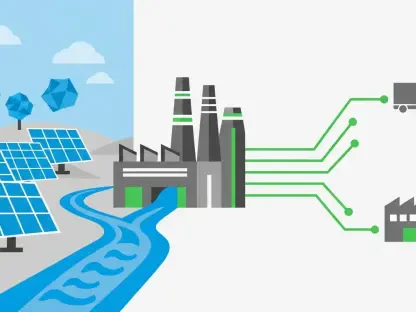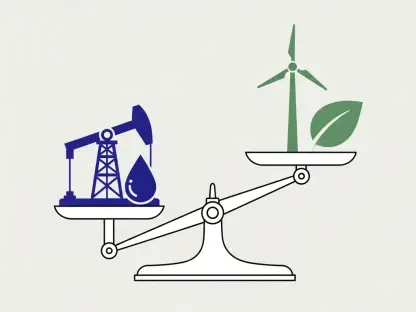As Europe aims to transform its energy grid, substantial investments, technological innovations, and regulatory changes are essential components to achieving a sustainable and efficient energy system.
The transformation of Europe’s energy grid is a monumental task that requires substantial investment, innovative solutions, and robust regulatory frameworks. As the continent moves towards a clean energy future, the modernization and expansion of electricity networks are essential to meet rising demand and integrate renewable energy sources. This article delves into the multifaceted dimensions of Europe’s grid infrastructure, highlighting the challenges and proposing strategic solutions.
The Necessity of Network Investments
Investing in network infrastructure is crucial for the growth and sustainability of modern economies. As technology advances and data consumption increases, robust and efficient networks become essential for businesses to remain competitive and for societies to thrive. By focusing on network investments, we can ensure that we are well-prepared for the demands of the future, fostering innovation and driving economic progress.
The European Union’s energy landscape is undergoing a significant transformation, driven by the need to reduce carbon emissions and embrace renewable energy sources. This shift necessitates substantial investments in electricity networks to support the increasing electrification of industries, transportation, and residential buildings. Modernizing Europe’s older electricity grids involves not only expanding the network but also upgrading existing assets to incorporate digital technologies and improve system flexibility.
Meeting Rising Demand
As Europe transitions to a clean energy future, the demand for electricity is expected to rise significantly due to the electrification of various sectors. This increase is driven by the growing use of electric vehicles, energy-efficient industrial processes, and the deployment of electric heating in residential buildings. These changes require substantial investments in electricity networks to ensure the grid can handle the heightened load and provide reliable power to consumers. Existing infrastructure, often designed for lower levels of electrification, must be upgraded and expanded to cope with the demands of this new energy landscape.
To meet the growing electricity demand, both public and private stakeholders must engage in coordinated and strategic investments. Governments need to incentivize private sector involvement through favorable policies and financial mechanisms. Simultaneously, utility companies and other market participants should prioritize modernization projects that enhance grid capacity and resilience. By doing so, Europe can build a robust energy infrastructure capable of supporting a sustainable and electrified future, reducing the risks of power outages and ensuring a seamless supply of clean energy to all sectors.
Integrating Renewable Energy
Integrating renewable energy into existing power grids is a complex challenge that requires careful planning and coordination. Renewable sources, such as solar and wind, are intermittent by nature, which can lead to issues with grid stability and energy supply consistency. To address these challenges, advanced technologies and infrastructure upgrades are necessary. Smart grids, energy storage systems, and demand response strategies play crucial roles in ensuring that renewable energy is effectively integrated and utilized. Additionally, policy support and investment in research and development are essential for accelerating the transition to a more sustainable energy future. By gradually increasing the share of renewables in the energy mix, it is possible to reduce carbon emissions and reliance on fossil fuels, contributing to a cleaner and more resilient power system.
One of the most significant challenges in transforming Europe’s energy grid is the integration of renewable energy sources, which are often generated in locations far from where they are consumed. To address this, the development of cross-border electricity infrastructure is necessary to transport renewable energy across regional divides. Interconnectors and other cross-border projects are crucial in balancing supply and demand, allowing regions with excess renewable generation to export power to those with higher demand. This interconnectedness enhances system stability and maximizes the utilization of renewable resources.
Investing in technologies that facilitate renewable integration is equally important. This includes advanced grid management systems, storage solutions, and demand response mechanisms that can adapt to fluctuations in renewable energy production. For example, smart grids equipped with real-time monitoring and control capabilities can optimize the distribution of electricity generated from wind and solar power. Energy storage systems like batteries and pumped hydro storage provide crucial balancing by storing excess energy during periods of high production and releasing it when generation is low. Such integrated approaches ensure that renewable energy is effectively harnessed and utilized across the entire European grid, fostering a more sustainable and resilient energy system.
Assessing Investment Needs
Efficient grid investment begins with a thorough assessment of infrastructure requirements. Policy decisions at local, national, and EU levels play a significant role in shaping these plans. Coordinated grid planning is essential for setting appropriate incentives for system development across Europe. An independent EU system operator could provide impartial evaluations of network investment needs, aiding in crafting a holistic European perspective.
Coordinated Grid Planning
Coordinated grid planning is essential for ensuring that investments in electricity networks are efficient and effective. This involves setting appropriate incentives for system development and aligning policy decisions at local, national, and EU levels. To achieve this, policymakers must consider the unique needs and capabilities of different regions while fostering an integrated approach to network development. This collaborative planning process can help identify and prioritize key projects that deliver maximum benefits for the entire continent.
Furthermore, the involvement of an independent EU system operator could greatly enhance the planning process. By providing impartial evaluations of network investment needs, this entity can help determine where resources should be allocated to achieve the greatest impact. Regular assessments conducted by the EU system operator would ensure that plans remain aligned with evolving energy demands and technological advancements. This coordinated approach would not only streamline investments but also support the broader objectives of sustainability and resilience in Europe’s electricity grid.
Independent EU System Operator
The establishment of an independent EU system operator could help streamline the planning and development of Europe’s electricity grid. This entity would be responsible for conducting regular assessments of network investment needs and identifying critical infrastructure projects. As an impartial body, it could offer unbiased insights and recommendations, ensuring that decisions are made based on comprehensive data and analysis. Such an operator would serve as a central hub for coordinating and optimizing grid investments across member states.
By providing a European-wide perspective, the independent system operator could ensure that investments are aligned with the broader goals of the energy transition. It would work to identify synergies and opportunities for collaboration between countries, fostering a more interconnected and efficient grid. Additionally, the operator could facilitate the implementation of innovative technologies and practices to enhance grid performance. By adopting a holistic and forward-thinking approach, the independent EU system operator would play a pivotal role in shaping a sustainable and resilient energy future for Europe.
Cross-Border and Holistic Investment
Investment in cross-border infrastructure, such as interconnectors, is pivotal to reducing consumer costs and integrating renewable energy at scale. However, the tangible realization of these projects often faces delays due to misaligned benefits among stakeholders involved. Establishing a European fund could help mediate negotiations and expedite the physical interconnection efforts. Ensuring a fair cost recovery mechanism from consumers is vital for garnering public support throughout the energy transition.
Importance of Interconnectors
Interconnectors play a crucial role in integrating renewable energy sources and reducing consumer costs. These cross-border infrastructure projects enable the efficient transport of electricity across regional divides, helping to balance supply and demand. By facilitating the exchange of electricity between countries, interconnectors allow regions to share resources and leverage their respective strengths in renewable energy generation. This interconnectedness enhances the overall stability and reliability of the grid, fostering a more resilient energy system.
Nevertheless, the development of interconnectors often faces delays due to misaligned benefits among stakeholders. This misalignment can arise from differences in national energy policies, regulatory frameworks, and financial interests. To overcome these challenges, it is essential to establish mechanisms that align the incentives of all parties involved. Transparent and equitable cost-sharing arrangements can ensure that the benefits of interconnectors are fairly distributed, encouraging cooperation and expediting project implementation. Addressing these issues is critical to achieving the successful integration of renewable energy and enhancing Europe’s energy security.
European Fund for Cross-Border Projects
To expedite the development of cross-border infrastructure, the establishment of a European fund could be beneficial. This fund would help mediate negotiations among stakeholders and provide financial support for critical projects. By ensuring a fair cost recovery mechanism from consumers, the fund could also help garner public support for the energy transition. Such a fund would not only facilitate the timely completion of interconnectors but also ensure that the financial burdens and benefits are equitably distributed among participating countries.
Additionally, the European fund could serve as a catalyst for innovation and collaboration in grid infrastructure development. By pooling resources and expertise, the fund could support the deployment of cutting-edge technologies and practices that enhance the performance and efficiency of cross-border projects. This collaborative approach would help mitigate the risks associated with large-scale infrastructure investments and ensure that projects are completed on time and within budget. Ultimately, the establishment of a European fund for cross-border projects would play a pivotal role in advancing Europe’s energy transition and fostering a more interconnected, sustainable, and resilient energy grid.
Policy and Planning
Organizations must carefully consider policy and planning to ensure alignment with long-term goals and regulatory requirements. Effective planning involves not only setting strategic objectives but also anticipating potential challenges and developing strategies to mitigate risks. Additionally, clear policy guidelines are essential to provide direction and consistency in decision-making processes. Balancing innovation with compliance is crucial, particularly in rapidly evolving industries. This approach enables organizations to adapt to changes while maintaining operational integrity and achieving sustainable growth.
The planning of network development, driven by national and EU-level policies, plays a significant role in investment efficiency. An EU independent system operator could take on the responsibility of network planning by issuing regular assessments to identify needs from a European-wide perspective. Cross-border projects should prioritize sustainability and market integration, but inefficiencies arise when those financing the infrastructure do not align with the beneficiaries.
Role of National and EU Policies
In its deliberate approach to addressing the complexities of cryptocurrencies, the SEC opted for another delay in its verdict on the spot Ethereum ETF. The extension grants the SEC an opportunity not only to conduct an in-depth examination of Ethereum’s suitability for ETF status but also to source public insight, which could heavily sway the conclusion. This speaks to the SEC’s attentiveness to the nuances of digital assets and their integration into regulatory frameworks, which it does not take lightly. The situation closely parallels the stalling faced by Grayscale, who is also waiting for the green light to transform its Ethereum Trust into a spot ETF, raising questions about the contrasting regulatory processes for Bitcoin and Ethereum.
National and EU-level policies play a crucial role in shaping the planning and development of electricity networks. These policies set the framework for investment decisions and influence the efficiency of network development. To ensure that investments are directed toward projects that offer the greatest benefits, it is essential to align policies at different levels. This alignment requires close collaboration between national governments, EU institutions, and other stakeholders to create a cohesive and comprehensive policy environment that supports the energy transition.
Moreover, national and EU-level policies must prioritize sustainability and market integration to maximize the benefits of cross-border projects. This entails incorporating environmental and economic considerations into planning processes and ensuring that infrastructure developments contribute to broader climate and energy goals. Policies should also encourage innovation and the adoption of advanced technologies that enhance grid performance and efficiency. By fostering a policy landscape that emphasizes sustainability, market integration, and innovation, Europe can optimize its investments in electricity networks and accelerate the transition to a clean energy future.
The SEC’s Cautious Approach and Call for Public Comment
In its deliberate approach to addressing the complexities of cryptocurrencies, the SEC opted for another delay in its verdict on the spot Ethereum ETF. The extension grants the SEC an opportunity not only to conduct an in-depth examination of Ethereum’s suitability for ETF status but also to source public insight, which could heavily sway the conclusion. This speaks to the SEC’s attentiveness to the nuances of digital assets and their integration into regulatory frameworks, which it does not take lightly. The situation closely parallels the stalling faced by Grayscale, who is also waiting for the green light to transform its Ethereum Trust into a spot ETF, raising questions about the contrasting regulatory processes for Bitcoin and Ethereum.
Prioritizing Sustainability and Market Integration
Cross-border projects should prioritize sustainability and market integration to maximize their benefits. However, inefficiencies can arise when the entities financing the infrastructure do not align with the beneficiaries. Addressing these misalignments is essential for ensuring that investments are efficient and effective. One approach to achieving this is through transparent and participatory planning processes that involve all relevant stakeholders. This collaborative approach can help identify and resolve potential conflicts of interest, ensuring that projects are designed and implemented in a way that delivers maximum value for all parties involved.
In addition to aligning financial incentives, prioritizing sustainability and market integration requires adopting a long-term and holistic perspective on infrastructure development. This means considering the full lifecycle impacts of projects, from construction and operation to decommissioning and recycling. It also involves integrating environmental and social criteria into decision-making processes to ensure that investments contribute to broader sustainability goals. By taking a comprehensive and forward-thinking approach, Europe can create a more resilient and sustainable energy grid that supports the continent’s transition to a low-carbon future.
Modern Network Regulation
Current regulatory frameworks often favor traditional capital expenditure, potentially leading to system inefficiencies and higher consumer costs. Thus, innovative regulatory mechanisms should encourage the most efficient grid solutions. Evaluating operational expenditure alongside capital investments can lead to better outcomes. Additionally, policy should advocate for innovative and cost-effective grid development solutions, moving beyond just physical infrastructure to incorporate advanced digital technologies and operational strategies.
Encouraging Efficient Grid Solutions
Modern network regulation should focus on encouraging the most efficient grid solutions. This involves moving beyond traditional capital expenditure approaches and considering operational expenditure as well. By evaluating both types of spending, policymakers can identify the most cost-effective and efficient solutions for grid development. This approach ensures that investments are not only directed toward physical infrastructure but also toward operational improvements that enhance grid performance and reliability.
Innovation plays a crucial role in achieving efficient grid solutions. Regulatory frameworks should incentivize the adoption of advanced technologies and practices that optimize grid operations. For example, digital technologies such as smart meters and grid management systems can provide real-time data and insights, enabling more effective monitoring and control of electricity flows. Similarly, demand response programs can help balance supply and demand by incentivizing consumers to adjust their usage patterns in response to grid conditions. By fostering a regulatory environment that encourages innovation and efficiency, Europe can build a more resilient and cost-effective energy grid.
Balancing Capital and Operational Expenditures
Balancing capital and operational expenditures requires careful financial planning and strategic allocation of resources to ensure long-term sustainability and growth.
Balancing capital and operational expenditures is essential for achieving optimal outcomes in grid development. Traditional regulatory frameworks often prioritize capital investments, such as building new infrastructure, while overlooking the importance of operational improvements. This imbalance can lead to system inefficiencies and higher consumer costs. To address this issue, policymakers should adopt a holistic approach that considers both types of expenditures in decision-making processes.
Evaluating operational expenditure alongside capital investments allows for a more comprehensive assessment of grid development needs. For example, investing in advanced grid management systems and maintenance programs can enhance the performance and lifespan of existing infrastructure, reducing the need for costly new constructions. Additionally, operational improvements such as demand response initiatives and energy efficiency programs can help manage grid demand and optimize resource utilization. By focusing on both capital and operational expenditures, Europe can create a more efficient, reliable, and cost-effective energy grid that supports the continent’s transition to a sustainable future.
Distribution vs. Transmission Layers
Distribution and transmission layers play distinct roles in the architecture of electrical power systems. The transmission layer is responsible for transporting electricity over long distances from power plants to substations, typically using high-voltage lines to minimize energy loss. On the other hand, the distribution layer handles the delivery of electricity from substations to end-users, such as homes and businesses, usually at lower voltages suitable for safe and practical consumption. Understanding the differences between these layers is crucial for efficient energy management and infrastructure development.
The European electricity network comprises high-voltage transmission grids and medium to low-voltage distribution grids. Most distribution system operators (DSOs) will account for significant future investments. Regulatory frameworks must adapt to the changing role of DSOs as they manage more decentralized energy resources. However, the technological sophistication and the regulatory landscape differ substantially between countries, making harmonized EU-level rules challenging to implement efficiently.
Adapting to Decentralized Energy Resources
In an effort to manage the growing shift towards decentralized energy, utilities and grid operators are exploring new technologies and methodologies. These efforts aim to integrate renewable energy sources such as solar and wind power, along with energy storage systems, into the existing grid infrastructure.
As the energy landscape evolves, the role of distribution system operators (DSOs) is becoming increasingly significant. DSOs are responsible for managing medium to low-voltage distribution grids, which are crucial for delivering electricity to end consumers. With the rise of decentralized energy resources, such as rooftop solar panels, electric vehicles, and energy storage systems, DSOs must adapt to new challenges and opportunities. These resources introduce greater complexity into grid management, requiring advanced capabilities for integration, monitoring, and control.
Regulatory frameworks must evolve to support the changing role of DSOs. This includes providing incentives for DSOs to invest in digital technologies and innovative solutions that enhance grid performance. Policies should also encourage the adoption of flexible grid management practices that can accommodate the dynamic nature of decentralized energy resources. By adapting to these new realities, DSOs can play a pivotal role in supporting the transition to a more decentralized and resilient energy system.
Harmonizing EU-Level Rules
The technological sophistication and regulatory landscape for electricity networks differ substantially between countries, making harmonized EU-level rules challenging to implement efficiently. While harmonization can create a more unified and streamlined approach to grid management, it must also account for the unique circumstances and capabilities of each member state. This requires a balanced approach that promotes common standards and best practices while allowing for flexibility in implementation.
Achieving harmonized EU-level rules involves fostering collaboration and knowledge sharing among member states. By leveraging the experiences and expertise of different countries, Europe can identify effective strategies for integrating decentralized energy resources and optimizing grid performance. Additionally, harmonization efforts should focus on creating a supportive policy environment that encourages innovation and investment in advanced grid technologies. By striking the right balance between harmonization and flexibility, Europe can build a more cohesive and resilient energy grid that supports the continent’s long-term sustainability goals.
Financing Network Investments
In an effort to address the growing demand for digital infrastructure, many companies are seeking innovative ways to finance network investments. The dynamic nature of the telecommunications industry necessitates a continuous evaluation of funding strategies to support the expansion and enhancement of network capabilities.
Financing options for grid investments can be public or private, with the European Investment Bank (EIB) and the Connecting Europe Facility – Energy (CEF-E) offering notable support. Given the substantial volumes of capital required, financing should focus on partnerships between public and private entities. Individual market players keen to safeguard national interests may resist building shared infrastructure, highlighting the need for better-aligned incentives and EU-level funding to close financing gaps for projects with broad European benefits.
Public and Private Partnerships
In its deliberate approach to addressing the complexities of cryptocurrencies, the SEC opted for another delay in its verdict on the spot Ethereum ETF. The extension grants the SEC an opportunity not only to conduct an in-depth examination of Ethereum’s suitability for ETF status but also to source public insight, which could heavily sway the conclusion. This speaks to the SEC’s attentiveness to the nuances of digital assets and their integration into regulatory frameworks, which it does not take lightly. The situation closely parallels the stalling faced by Grayscale, who is also waiting for the green light to transform its Ethereum Trust into a spot ETF, raising questions about the contrasting regulatory processes for Bitcoin and Ethereum.
Financing the transformation of Europe’s energy grid requires substantial investment, which can be sourced from both public and private entities. The European Investment Bank (EIB) and the Connecting Europe Facility – Energy (CEF-E) are key institutions that provide support for infrastructure projects. These institutions play a crucial role in mobilizing capital and ensuring that critical projects receive the necessary funding. However, given the scale of the investment needed, partnerships between public and private entities are essential to bridge the financing gap.
Public-private partnerships (PPPs) offer a collaborative approach to infrastructure financing, leveraging the strengths of both sectors. Public entities can provide policy support, regulatory frameworks, and initial funding, while private entities bring expertise, innovation, and additional capital. By working together, these partnerships can achieve synergies that enhance project implementation and performance. For example, PPPs can accelerate the deployment of advanced grid technologies, streamline project management processes, and optimize resource allocation. Ensuring that PPPs are structured effectively and transparently is crucial for maximizing their impact and fostering confidence among stakeholders.
Aligning Incentives and EU-Level Funding
Individual market players may resist building shared infrastructure due to concerns about safeguarding national interests, highlighting the need for better-aligned incentives. To address this challenge, policymakers must create mechanisms that align the interests of all stakeholders and encourage collaboration. This can involve designing equitable cost-sharing arrangements, providing financial incentives for cross-border projects, and fostering a regulatory environment that supports cooperative efforts. By aligning incentives, Europe can overcome resistance and promote the development of shared infrastructure that benefits the entire continent.
EU-level funding plays a crucial role in closing financing gaps for projects with broad European benefits. Institutions like the EIB and the CEF-E can provide targeted support for critical infrastructure developments, ensuring that resources are directed towards projects that deliver the greatest impact. Additionally, innovative financing instruments such as green bonds and investment platforms can help attract private capital and diversify funding sources. By leveraging EU-level funding and aligning incentives, Europe can create a more cohesive and integrated energy grid that supports the continent’s transition to a sustainable future.
Efficient Network Operation and Regulation
In its deliberate approach to addressing the complexities of cryptocurrencies, the SEC opted for another delay in its verdict on the spot Ethereum ETF. The extension grants the SEC an opportunity not only to conduct an in-depth examination of Ethereum’s suitability for ETF status but also to source public insight, which could heavily sway the conclusion. This speaks to the SEC’s attentiveness to the nuances of digital assets and their integration into regulatory frameworks, which it does not take lightly. The situation closely parallels the stalling faced by Grayscale, who is also waiting for the green light to transform its Ethereum Trust into a spot ETF, raising questions about the contrasting regulatory processes for Bitcoin and Ethereum.
Efficient system operation requires integrating flexible technologies and enhancing cross-border electricity trade. European network planning, primarily a bottom-up approach through national TSOs, should embrace transparent and independent top-down assessments to identify and prioritize critical infrastructure projects. Misaligned incentives and the risk of overbuilding underline the complexity of effective network regulation, which must adapt to balance capital and operational expenditures.
Integrating Flexible Technologies
Efficient network operation requires integrating flexible technologies that can adapt to dynamic grid conditions. These technologies include advanced grid management systems, energy storage solutions, and demand response programs. By incorporating these innovations, grid operators can enhance system flexibility, optimize resource utilization, and improve overall grid performance. For example, energy storage systems can store excess renewable energy during periods of high production and release it during peak demand, helping to balance supply and demand.
Additionally, demand response programs incentivize consumers to adjust their electricity usage in response to grid conditions, further enhancing system flexibility. Smart grid technologies play a crucial role in enabling these programs by providing real-time data and control capabilities. By integrating flexible technologies, Europe can create a more resilient and efficient energy grid that can accommodate the growing penetration of renewable energy sources and address the challenges of a decarbonized energy system.
Enhancing Cross-Border Electricity Trade
Enhancing cross-border electricity trade is essential for optimizing the integration of renewable energy and improving grid efficiency. European network planning, traditionally a bottom-up approach through national transmission system operators (TSOs), should also incorporate transparent and independent top-down assessments. These assessments can help identify and prioritize critical infrastructure projects, ensuring that investments are directed towards the most impactful developments. By taking a holistic and coordinated approach to network planning, Europe can maximize the benefits of cross-border electricity trade.
However, achieving efficient network operation also requires addressing misaligned incentives and the risk of overbuilding. Policymakers must create regulatory frameworks that balance capital and operational expenditures, ensuring that investments are both cost-effective and aligned with broader energy goals. This involves adopting performance-based regulations that incentivize grid operators to optimize their operations and invest in innovative solutions. By fostering a regulatory environment that supports efficient network operation and cross-border electricity trade, Europe can build a more integrated and sustainable energy grid that meets the continent’s long-term needs.
Recommendations
Introduction
The recommendations provided below aim to address the current challenges and opportunities within the cryptocurrency market and its regulatory environment.
Regulatory Clarity and Consistency
Establish Clear Guidelines: Create comprehensive and clear regulatory guidelines for cryptocurrencies that will provide certainty for investors and market participants.
Consistency Across Digital Assets: Ensure that regulatory processes are consistent for all digital assets, including Bitcoin and Ethereum, to avoid confusion and market distortion.
Public Engagement
Solicit Public Feedback: Actively engage with the public and stakeholders through consultations and feedback sessions to better understand their views and concerns regarding cryptocurrency regulations.
Educational Campaigns: Launch educational campaigns aimed at informing the public about the risks and benefits of investing in cryptocurrencies and the regulatory measures in place to protect them.
Technological Innovation
Support Technological Advancements: Encourage innovation in the crypto space by supporting technological advancements that enhance security, transparency, and efficiency in digital asset transactions.
Collaborate with Industry Experts: Work closely with industry experts and academia to stay abreast of the latest developments and best practices in cryptocurrency technology and regulation.
By implementing these recommendations, regulators can foster a balanced and forward-looking approach to governing the cryptocurrency market, ultimately ensuring its growth and stability while protecting investors.
To improve planning, financing, and regulation, the policy brief suggests three strategic actions:
- Establish a European independent system operator (EU ISO) to centralize operation and transparent planning of the interconnected grid.
- Expand CEF-E funds and better target cross-border infrastructure projects, addressing funding gaps and distributional challenges while facilitating EU-wide benefits.
- Implement national funds to smooth consumer tariffs, using amortization vehicles to alleviate sudden cost spikes and ensure steady consumer prices, while reducing overall investment costs.
Building a Sustainable Energy Future
The transformation of Europe’s energy grid is a massive undertaking that demands significant investment, cutting-edge solutions, and strong regulatory support. As Europe transitions towards a cleaner energy future, updating and expanding electricity networks are crucial to handle growing energy demands and incorporate renewable energy sources effectively. This task is not just about upgrading old systems but also integrating new technologies that can support a sustainable energy model.
Renewable energy, like wind and solar, is less predictable than traditional energy sources, complicating the balance of supply and demand. Hence, enhancing grid flexibility, increasing storage capabilities, and modernizing infrastructure are vital steps.
Furthermore, international cooperation is essential, as Europe’s energy grid connects multiple countries, necessitating a harmonized approach to regulation and technology standards to ensure seamless energy flow across borders.
Major challenges include securing the necessary investments, balancing national interests with collective goals, and encouraging technological innovations. Policymakers must craft strategic solutions that not only promote green energy but also ensure the grid’s stability and reliability.
In conclusion, upgrading Europe’s energy grid is a complex but vital task. It requires significant investments, international collaboration, and innovative technology to support the transition to renewable energy and meet future demands.









